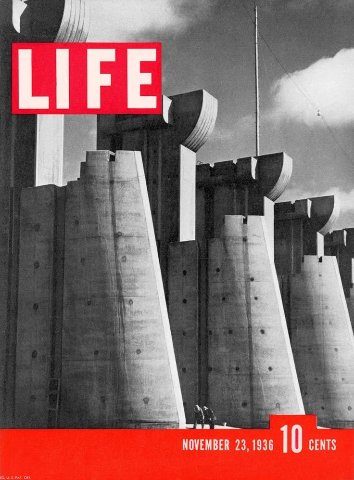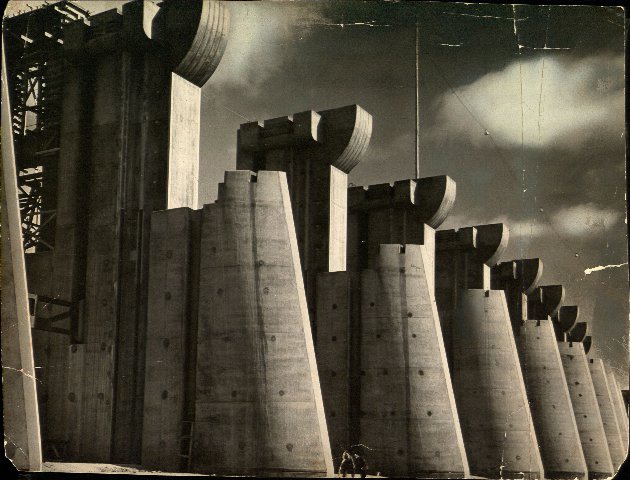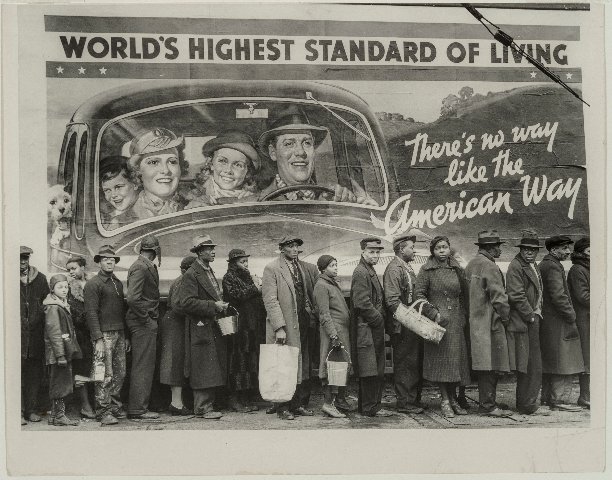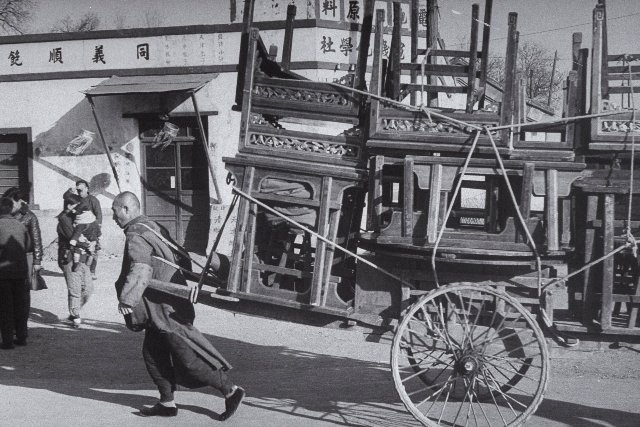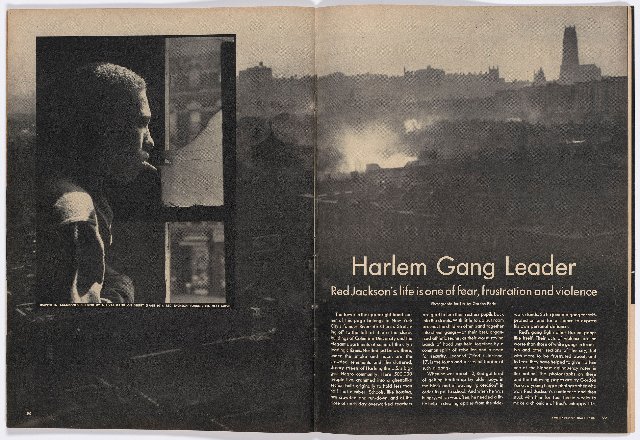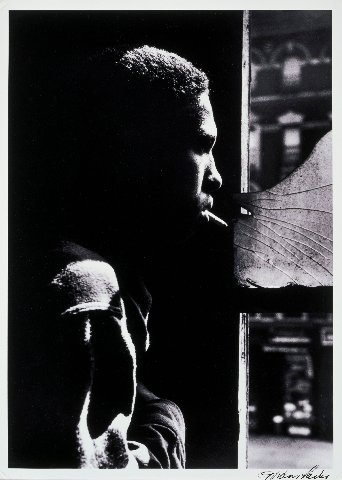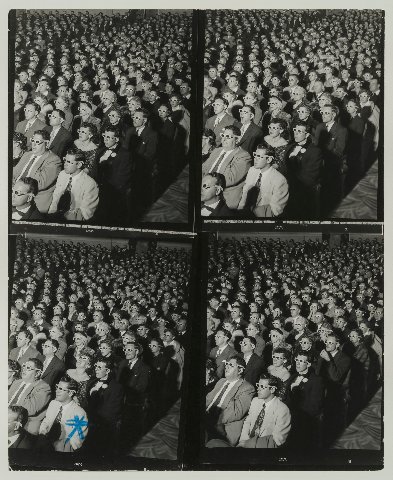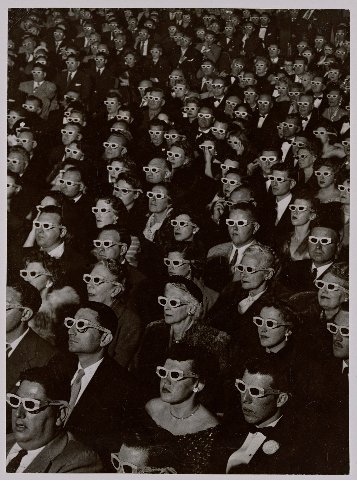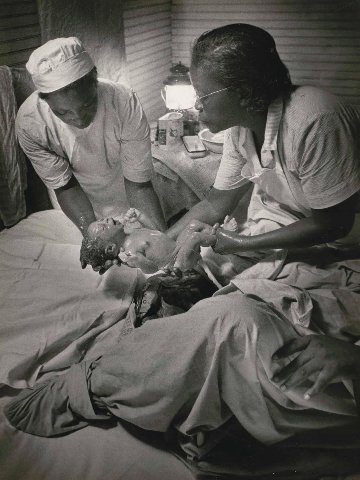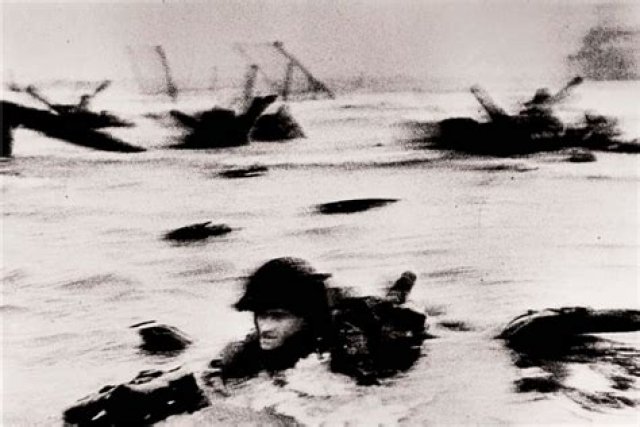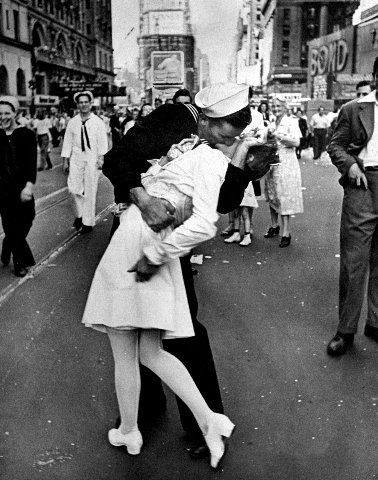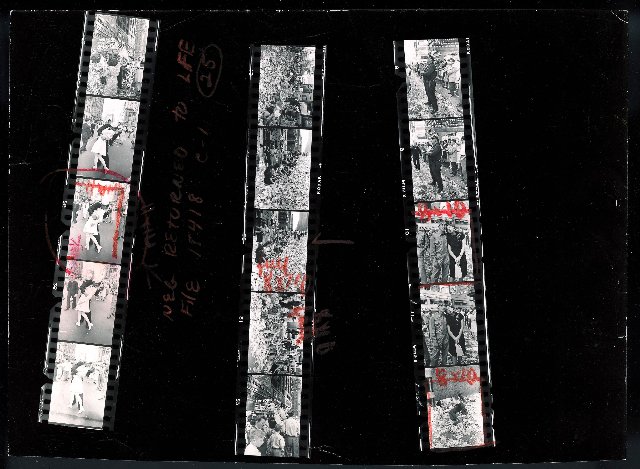LIFE Magazine and the Power of Photography
Boston Museum of Fine Arts: October 9 to January 16, 2023
By: Charles Giuliano - Oct 18, 2022
In a sprawling, compelling, insightful, disjointed and ultimately disappointing exhibition the Boston Museum of Fine Arts has organized “Life Magazine and the Power of Photography.”
I was born in 1940 and grew up during an era when magazines were a cheap, ubiquitous and influential aspect of American mass media.
My parents were doctors with an office that occupied the ground floor of our home. They alternated having evening hours. After dinner at 5:30 PM it was my task to go downstairs to unlock the door and turn on the lights in the waiting room. Part of that chore was to neaten the stack of magazines. Now and then I lingered to discuss symptoms with the patients.
We subscribed to Life, Look, Time, and Saturday Evening Post. Mail was delivered three times a day. I pounced on the latest issues which I perused before they got to the waiting room.
During the war years, after a month or so downstairs, I had permission to cut up the magazines. I kept a scrap book following the war. How I would love to have that today. Norman Rockwell’s covers for the Saturday Evening Post were my introduction to art.
In an era before television the strong graphics of magazines conveyed and shaped the news. It was a instrument of propaganda rallying the nation in the war effort as well as conveying a strongly biased medium is the message for the American way.
As a kid I soaked up what is now regarded as racism and white supremacy through pulp fiction, comic books with their range of super heroes, and comic strips like Li’l Abner, Dick Tracy, and Terry and the Pirates in the Sunday funnies. During a newspaper strike New York Mayor, Fiorello LaGuardia, read them over radio to an eager audience of kids.
We never questioned the extreme caricatures with which our enemies, the Japanese and Germans were depicted. That extended across all aspects of media and movies starting with D. W. Griffith and films like Birth of a Nation, Broken Blossoms and Intolerance. Consider the roles of Oscar winner, Hattie McDaniel and Butterfly McQueen in the 1939 epic Gone with the Wind. Hindsight is harsh for the yellowface of Sidney Toller as Charlie Chan or the demeaning comedy of Stepin Fechit.
Shaped by mass media and entertainment racism and anti Semitism was embedded deeply in my generation. It has been a lifelong effort to deprogram the allegedly patriotic propaganda of the war years. Black soldiers who we treated with respect in Europe came home to lynching and the Ku Klux Klan.
Every other Sunday, the maid’s day off, we went to the theatre district for dinner and a movie. There were two films, a B Movie and a Feature, with cartoons and shorts. We caught up with events through clips in Movietone News the eyes and ears of the world.
10 motion-picture producers, directors, and screenwriters who appeared before the House Un-American Activities Committee (HUAC) in October 1947, refused to answer questions regarding their possible communist affiliations. After spending time in prison for contempt of Congress, they were blacklisted by the Hollywood studios.
The 1976 Woody Allen film The Front conveys how they contributed award winning scripts through pseudonyms. Other important films were Hollywood on Trial, 1976, and Trumbo, 2015, starring Bryan Cranston.
Dalton Trumbo’s uncredited work won two Academy Awards for Best Story: for Roman Holiday (1953), which was presented to a front writer, and for The Brave One (1956), which was awarded to a pseudonym used by Trumbo. When he was given public screen credit for both Exodus and Spartacus in 1960, it marked the beginning of the end of the Hollywood Blacklist for Trumbo and other affected screenwriters. He finally was given full credit by the Writers' Guild for Roman Holiday in 2011, nearly 60 years after the fact.
The 10 were Alvah Bessie, Herbert Biberman, Lester Cole, Edward Dmytryk, Ring Lardner, Jr., John Howard Lawson, Albert Maltz, Samuel Ornitz, Adrian Scott, and Dalton Trumbo.
The group originally included the German writer Bertolt Brecht, but he fled the country on the day following his inquest. The remaining 10 were voted in contempt of Congress on November 24, 1947. Convicted in federal court the following year, they were given sentences of six months to one year in prison.
In the era of the Cold War, Stalinism, Korean War, and French Indo China War which American was drawn into, through the crusade of Senator Joseph McCarthy and HUAC liberals and artists were framed as subversive. The falsehood was that, under the influence of primarily Jewish studio moguls, Americans were being fed subversive communist propaganda.
During the Great Depression of the 1930s, the socialists of WWI, International Workers of the World (IWW or Wobblies), evolved into the Communist Party of America (CPA). Swaths of intellectuals and artists embraced socialism while remaining staunchly American in their values.
“Life Magazine and the Power of Photography” is a collaboration between the MFA and the Princeton University Art Museum. The exhibition has been curated by the MFA’s Kristen Gresh, Princeton’s Katherine A Bussard, and independent curator Alissa Schapiro.
Drawing on unprecedented access to Life magazine’s Picture Collection, as well as other archives, the exhibition brings together more than 180 objects, including vintage photographs, contact sheets, assignment outlines, internal memos, and layout experiments. Visitors can trace the construction of a Life photo-essay from assignment through to the creative and editorial process of shaping images into a compelling story.
Interspersed throughout the exhibition, three immersive contemporary “moments” feature works by artists active today who interrogate news media through their practice. “A multimedia installation by Alfredo Jaar, screen prints by Alexandra Bell, and a new commission by Julia Wachtel frame larger conversations for visitors about implicit biases and systemic racism in contemporary media,” an MFA press release states.
The inclusion of the work by three contemporary artists carves out and deconstructs what might have been a celebration of masters of photojournalism. We recall such treatment in vintage MoMA exhibitions.
The prime example of which was The Family of Man an exhibition of 503 photographs from 68 countries curated by Edward Steichen, the director of the New York City Museum of Modern Art's (MoMA) Department of Photography. According to Steichen, the exhibition represented the "culmination of his career." The title was taken from a line in a Carl Sandburg poem.
The Family of Man was exhibited in 1955 then toured the world for eight years to record-breaking audience numbers. Steichen said the people "looked at the pictures, and the people in the pictures looked back at them. They recognized each other.”
In a different time and place, with a woke agenda, deconstruction and an ambitious but distracting educational program, the curators have subverted their core mandate. They were charged with conveying the compelling power of a selection of the finest work of the greatest practitioners of the genre. By so doing they fall far short of Steichen’s benchmark which defined documentary photography as an artform on a par with the greatest painting and sculpture.
The works by Jaar, Bell, and Wachtel are compelling but carve out too much precious space in the Gund Gallery. Better programming would have been to collaborate with the contemporary curators to mount a related or side-bar exhibition in their galleries.
It’s unlikely that we will ever return to the notion of ars gratia artis but it has grown tedious to absorb yet another curatorial sermon from the mount. Particularly when presenting such iconic and paradigmatic material. They might consider telling it like it is and allowing the material to speak for itself. If I need a lesson, awakening, or spanking that can be done on my own time.
There are ways in which the curators might have more effectively woven their agit prop into the fabric of the exhibition itself. They squandered the opportunity to shape that important narrative by offloading that agenda playing spin the bottle with three contemporary artists. Imagine the impact of devoting that space to several of the Life photographers through more of their work or mural scaled treatment of the exhibition’s most iconic images.
In forging a media empire Henry Luce was more powerful and successful in promoting his own white supremacist views on American LIFE than a gaggle of Hollywood Ten and Marxist intellectuals. He had a staff of the greatest photojournalists of his era to execute his vision.
A lot of the exhibition informs us of how the magazine was put to bed each week. We look over the shoulders as editors select frames from contact sheets. It is interesting to see how stories are pitched and assigned following scripts that evolved into lavish layouts with pithy captions. A typical feature was culled from several thousand frames. The invention of 35 MM Leica cameras and rolls of 36 frame film made that possible.
They went into the field and shot film which was then processed by technicians back home becoming archival property of Time Life Inc. They used recycled, bulk loaded, movie film. This silver nitrate stock, however, was flammable and deteriorated. By the 1950s it was obsolete which represented a conservation issue for the priceless archives.
The extent of editorial control over those in the field is revealing and somewhat appalling. When Life editors learned that Henri Cartier Bresson was planning a trip to China they commissioned him, by arrangement through Magnum, and sent him a script. The home office told a genius what to shoot which indeed he did following a check list.
Common sense would be to let him create and then shape that into a feature. Nobody told his peer Picasso what to paint. That underscores how Life, working with top talent, regarded staff as employees taking orders.
Now and then great art squeezed through the cracks. The freelance photographer, Gordon Parks, proposed a 1948 feature that humanized Harlem gang leader Red Jackson. The compelling story that brought balance and realism to the pages of Life earned Parks a staff position.
Similarly W. Eugene Smith brought poignant insight to a landmark, 1948 feature about Dr. Ernest Ceriani of Colorado in The Country Doctor. Smith was part of the staff covering the war in the South Pacific for which he created canonical images.
Henry Robinson Luce (April 3, 1898 – February 28, 1967) with partners and associates founded Time Magazine (1923), Fortune Magazine (1929), bought Life Magazine in 1936 (it was founded in 1883), and Sports Illustrated in 1954.
Luce was only interested in purchasing the name of Life which he transformed into a photo magazine. The first cover featured Margaret Bourke-White’s (June 14, 1904 – August 27, 1971) “Fort Peck Dam, Montana” published November 23, 1936. Unlike many colleagues she was employed during the Depression and did not work for the relief programs The Work Progress Administration (WPA) or Farm Security Administration (FSA). Negatives created during those programs are owned by the Library of Congress.
She worked for Luce. In 1929 Bourke-White accepted a job as associate editor and staff photographer of Fortune magazine, a position she held until 1935. In 1930 she became the first Western photographer allowed to enter the Soviet Union. Luce hired her as the first female photojournalist for Life magazine in 1936. She was a staff photographer until 1940, but returned from 1941 to 1942, and again in 1945, after which she stayed through her semi-retirement in 1957.
Her work is notable for a sharp eye and instinct for irony. That is well represented in this exhibition by “Kentucky Flood” 1937. Blacks on a bread line are seen under a billboard of a happy white family in a car under the inscription “”World’s Highest Standard of Living; There’s No Way Like the American Way.
A colleague was Walker Evans (November 3, 1903 - April 10, 1975) who was also an editor for Luce’s upscale and expensive to produce Fortune Magazine. It commissioned work by leading artists in celebration of industry and commerce.
In 1902 Alfred Stiglitz had launched Camera Work which then and now was the gold standard for publications producing quarterly issues through 1917. Photogravures, printed under Stieglitz’s supervision, were tipped in by hand in order to better represent subtle gradations of tone and value. Featured artists of the Photo-Secession, included James Craig Annan, Frank Eugene, Gertrude Käsebier, Edward Steichen, Frederick Evans, Alvin Langdon Coburn, Clarence White, and others. Pages from Camera Work have been sold as works of art.
Evans worked without pressure at Fortune and enjoyed artistic freedom unlike the Life staff under weekly deadlines. One 1936 story idea, to cover rural farmers and sharecroppers, took so long and became so complicated that it was rejected by Fortune. With collaborator James Agee it was published in 1941 as the book “Let Us Now Praise Famous Men.”
Eventually, Life could not compete with the immediacy of television. Vietnam, which we watched each night anchored by Walter Cronkite and CBS News became a living room war. Later we saw “Shock and Awe” in real time with CNN. Weekly magazines couldn’t keep up with the news cycle. When postal rates were raised it was no longer feasible to print Life which initially sold for ten cents a copy. Now the dominance of the internet and social media have shrunk news rooms and shuttered newspapers.
The MFA’s exhibition may be regarded as a study of mass media archaeology. In its day Life was there for all the main events. Robert Capa, in just a few frames, (the exhibition includes his sparse contact sheet) covered the Normandy Landing. There is controversy about what happened to his film and how long he was on the beach that day. We will write about that separately. Life was in Times Square on VJ Day with Alfred Eisenstaedt’s image of a sailor kissing a nurse. It covered the Ali-Frazier fight and printed stills from the Zapruder film of the Kennedy assassination.
Yousuf Karsh created many of Life’s seminal portrait covers including Winston Churchill and Ernest Hemingway. Some years ago, the MFA mounted an exhibition of his work. While photographing MFA director, Perry Rathbone, he explored behind the scenes of the museum. I was surprised when he poked his nose into the Egyptian basement storage area where I worked. He asked what I was doing and seemed genuinely interested.
A regular feature was “Life Goes to a Party.” There was excitement when a team of journalists came to cover the social life of the Annisquam Yacht Club. The presence of the Life team caused a lot of buzz in our community.
In that sense, the MFA exhibition is ultimately personal. Life was crucial in forming my taste and vision as an artist, photographer and journalist. The underbelly of white supremacy and tepid coverage of Civil Rights, however, frosts the bloom.
While Gordon Parks and David Douglas Duncan were staff photographers, to quote a friend who worked at lily white CBS, they were flies in the buttermilk.
Full captions
Normandy Invasion on D Day, Soldier Advancing through Surf, 1944 Robert Capa (American (born in Hungary), 1913–1954) Photograph, gelatin silver print The Howard Greenberg Collection—Museum purchase with funds donated by the Phillip Leonian and Edith Rosenbaum Leonian Charitable Trust Robert Capa © International Center of Photography / Magnum Photos Courtesy Museum of Fine Arts, Boston 04.
At the Time of the Louisville Flood, 1937 Margaret Bourke White (American, 1904–1971) Photograph, gelatin silver print * The Howard Greenberg Collection—Museum purchase with funds donated by the Phillip Leonian and Edith Rosenbaum Leonian Charitable Trust * Photo by Margaret Bourke-White. © LIFE Picture Collection Courtesy Museum of Fine Arts, Boston.
3-D Movie Contact Sheet, 1952 Jay Eyerman (American, 1906–1985) Photograph, gelatin silver print, contact sheet * Life Picture Collection * Photo by J.R. Eyerman. © LIFE Picture Collection. * Courtesy Museum of Fine Arts, Boston 06. Audience watches movie wearing 3-D spectacles, 1952 J.R. Eyerman (American, 1906–1985) Photograph, gelatin silver print * The Howard Greenberg Collection—Museum purchase with funds donated by the Phillip Leonian and Edith Rosenbaum Leonian Charitable Trust * Photo by J.R. Eyerman. © LIFE Picture Collection. * Courtesy Museum of Fine Arts, Boston
Fort Peck Dam, Montana, 1936 Margaret Bourke-White (American, 1904–1971) Photograph, gelatin silver print * Life Picture Collection * Photo by Margaret Bourke-White. © LIFE Picture Collection. * Courtesy Museum of Fine Arts, Boston . Life, November 23, 1936 (Cover photograph by Margaret Bourke-White), 1936 Life Magazine (1883–1972) Illustrated periodical * Life Picture Collection * Photo by Life Magazine. © LIFE Picture Collection. * Courtesy Museum of Fine Arts, Boston
Contact sheet w. frames from photographer Alfred Eisenstaedt's famed set of the sailor kissing the nurse and other images of the Times Square VJ Day celebrations, 1945 Alfred Eisenstaedt (German (active in the United States) 1898–1995) Photograph, gelatin silver print, contact sheet * Life Picture Collection * Photo by Alfred Eisenstaedt. © LIFE Picture Collection. * Courtesy Museum of Fine Arts, Boston VJ Day in Times Square, 1945 Alfred Eisenstaedt (German (active in the United States) 1898–1995) Photograph, gelatin silver print * Alan and Susan Solomont * Photo by Alfred Eisenstaedt. © LIFE Picture Collection. * Courtesy Museum of Fine Arts, Boston
Red Jackson, Harlem, New York, 1948 Gordon Parks (American, 1912–2006) Photograph, gelatin silver print * Princeton University Art Museum * Photograph by Gordon Parks. Courtesy of and copyright The Gordon Parks Foundation. * Courtesy Museum of Fine Arts, Boston 15. (p. 96?97) [Harlem Gang Leader opening spread], 1948 Life Magazine (1883–1972) Illustrated periodical * Princeton University Art Museum * From LIFE Magazine, November 1, 1948, pages 96-97. Photograph by Gordon Parks. Courtesy of and copyright The Gordon Parks Foundation. * Text © 1948 LIFE Picture Collection. * Courtesy Museum of Fine Arts, print on paper * Courtesy of the Artist * Photograph © Museum of Fine Arts, Boston 20. Life Magazine, April 19, 1968.
Untitled (Peiping), 1948
Henri Cartier-Bresson (French, 1908–2004)
Photograph, gelatin silver print
* Life Picture Collection
* Henri Cartier-Bresson © Fondation Henri Cartier-Bresson / Magnum Photos.
* Courtesy Museum of Fine Arts, Boston

